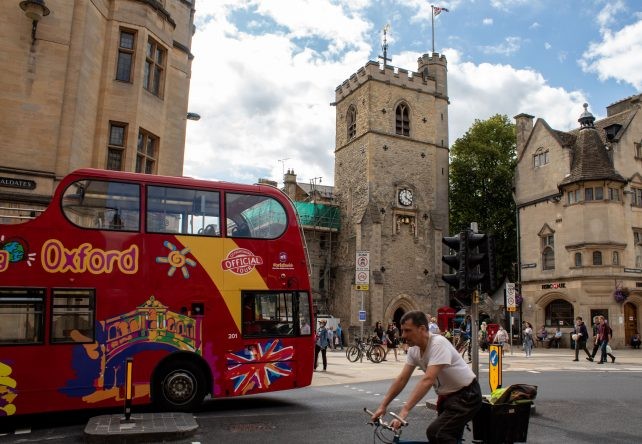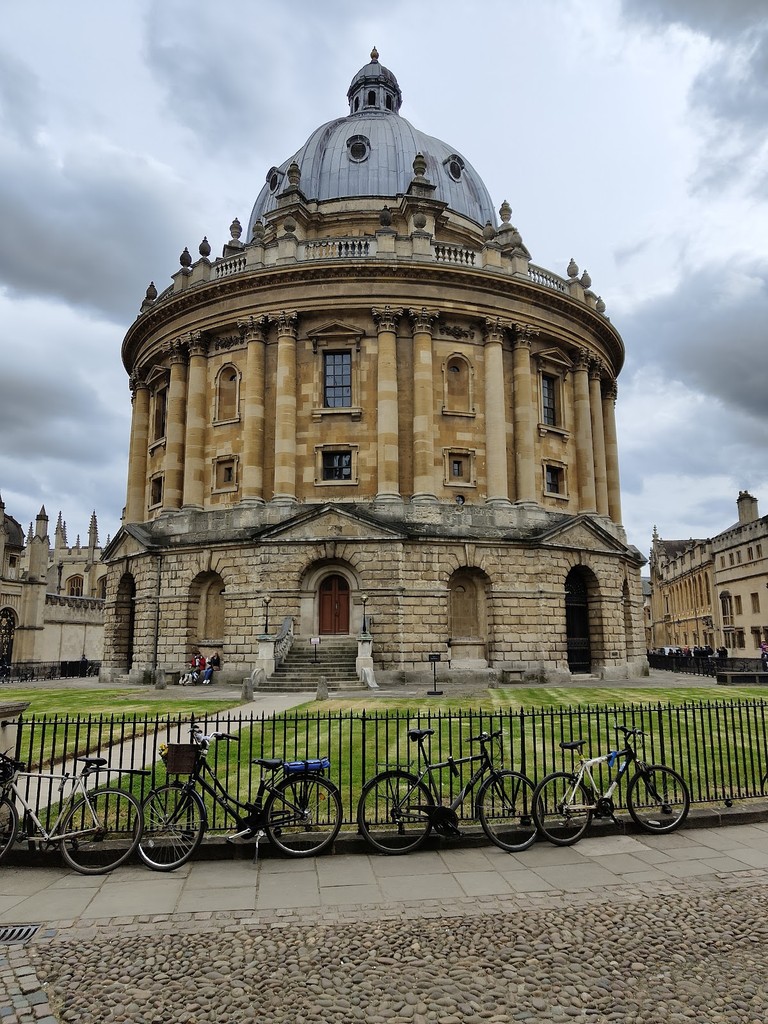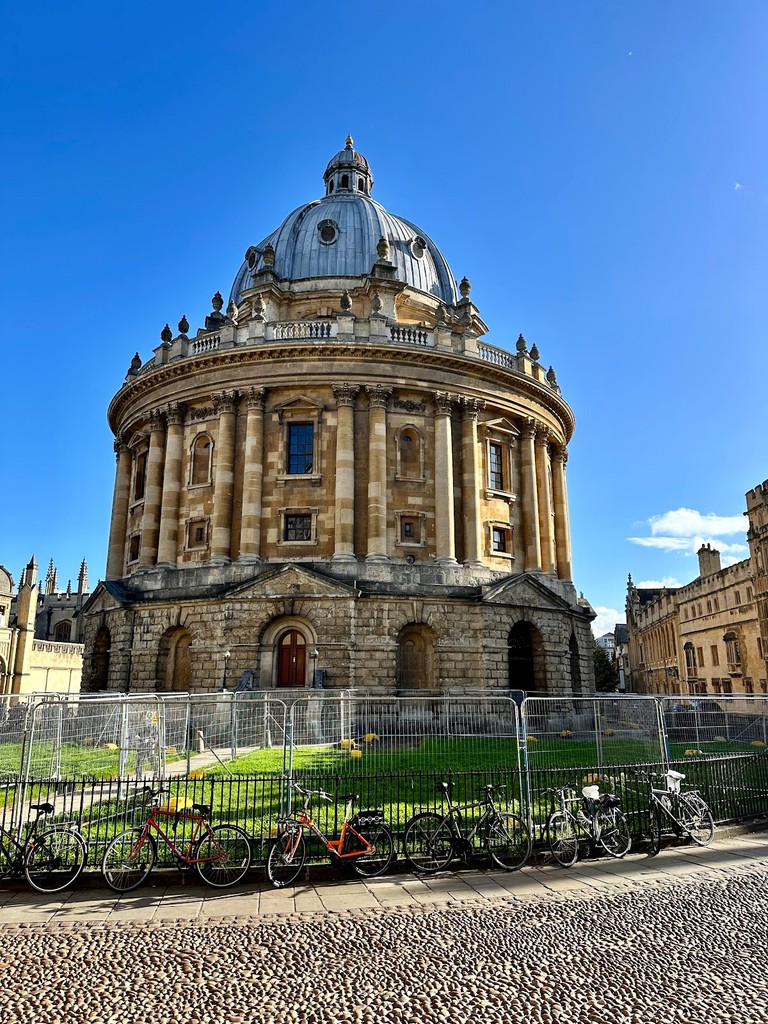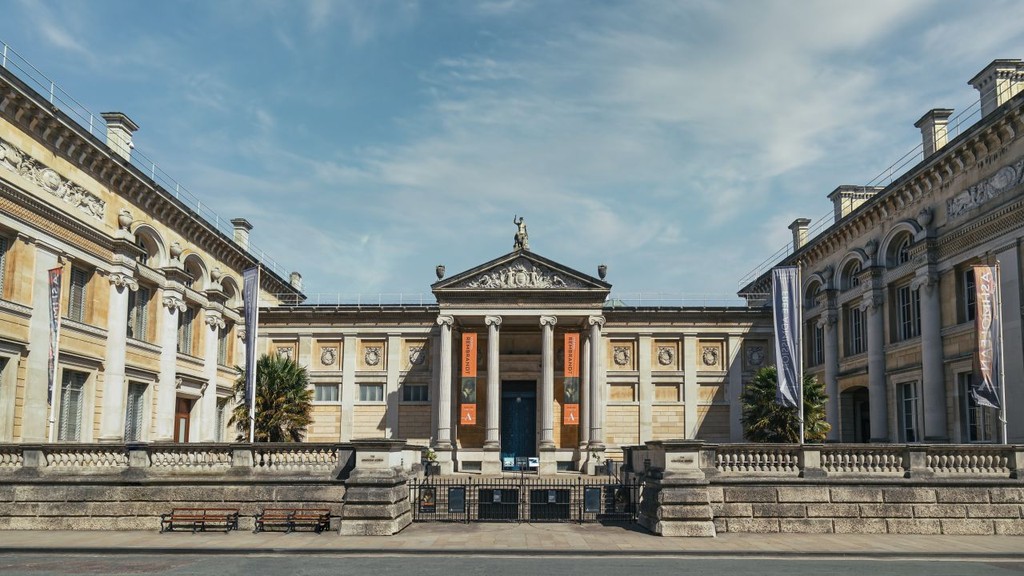Oxford Unveiled: A Historical Journey
Join us on a captivating free walking tour through Oxford's rich history and stunning architecture, exploring its landmarks and vibrant culture.
Time
3 Hours
Stops
9 Places
Distance
1.6 km
Oxford Castle & Prison
Begin your journey at Oxford Castle & Prison, a site rich in history dating back to the Norman Conquest, offering insights into the city's medieval past.

Oxford Castle & Prison (Source: Google Maps)
Oxford Castle & Prison, a historic site dating back to the Norman Conquest, played a significant role in the city's medieval history. Originally built in the 11th century, it served as both a royal castle and a prison. The castle's architecture reflects its turbulent past, featuring a blend of Norman and later medieval styles. Visitors can explore the castle's grounds, including the imposing mound that offers stunning views of the city. The site is also home to a fascinating exhibition detailing the lives of prisoners and the castle's transformation over the centuries, making it a key landmark in understanding Oxford's historical narrative.
Carfax Tower
Just a short walk away, Carfax Tower offers panoramic views of the city and is considered the very center of Oxford.

Carfax Tower (Source: Google Maps)
Carfax Tower, the iconic bell tower of St. Martin’s Church, stands at the heart of Oxford. This historic structure dates back to the 13th century and was originally part of a larger church. The tower offers panoramic views of the city, making it a popular spot for visitors. Its architecture showcases a mix of Gothic and medieval styles, with intricate stonework and a distinctive clock face. The name 'Carfax' derives from the Latin 'quadrifurcus,' referring to the four roads that converge at this point. The tower has witnessed significant events in Oxford’s history, including celebrations and public gatherings, cementing its status as a cultural landmark.
University Church of St Mary the Virgin
Head to the University Church of St Mary the Virgin, a stunning example of Gothic architecture and a pivotal location in the history of Oxford University.

University Church of St Mary the Virgin (Source: Google Maps)
The University Church of St Mary the Virgin is a stunning example of Gothic architecture and a central site in the history of Oxford University. Dating back to the 13th century, it is known for its impressive tower, which can be climbed for breathtaking views of the city. The church has been a place of worship, education, and community gatherings for centuries. Its interior features beautiful stained glass windows and historical artifacts, reflecting the university's rich heritage. The church also plays a vital role in university ceremonies, including graduation services, making it a poignant symbol of academic achievement and tradition.
Radcliffe Camera
Continue to the iconic Radcliffe Camera, an architectural masterpiece and one of the most photographed buildings in Oxford.

Radcliffe Camera (Source: Google Maps)
The Radcliffe Camera, completed in 1749, is one of Oxford's most iconic buildings and a masterpiece of neoclassical architecture. Designed by James Gibbs, it serves as a reading room for the Bodleian Library and is known for its distinctive circular shape and domed roof. The building's elegant façade features intricately carved stonework and classical columns, making it a favorite subject for photographers. The Radcliffe Camera is not only a functional space but also a symbol of scholarly pursuit and architectural beauty in Oxford. Its design has influenced library architecture worldwide, exemplifying the blend of utility and aesthetics.
Bodleian Library
Adjacent to the Radcliffe Camera, the Bodleian Library is one of the oldest libraries in Europe and a treasure trove of knowledge and history.

Bodleian Library (Source: Google Maps)
The Bodleian Library, established in 1602, is one of the oldest libraries in Europe and a key institution in the academic world. It houses a vast collection of over 13 million printed items, manuscripts, and historical documents, making it a treasure trove of knowledge. The library's stunning architecture features a mix of Gothic and Renaissance styles, with its iconic Divinity School showcasing beautiful fan-vaulted ceilings. The Bodleian has played a pivotal role in the preservation of literature and learning, serving scholars and students for centuries. It is also known for its strict rules and the unique practice of requiring every published book in the UK to be deposited here.
Bridge of Sighs
Just a short stroll away, the Bridge of Sighs connects two parts of Hertford College and is a beloved architectural feature of Oxford.

Bridge of Sighs (Source: Google Maps)
The Bridge of Sighs, officially known as Hertford Bridge, is a picturesque structure that connects two parts of Hertford College. Built in 1914, it is inspired by the famous Bridge of Sighs in Venice and is a beloved architectural feature in Oxford. The bridge's elegant design includes a series of arches and intricate details, making it a popular spot for photographs. The name reflects the romantic notion of students sighing as they cross the bridge to attend classes, symbolizing the bittersweet nature of academic life. The Bridge of Sighs has become an enduring symbol of Oxford, representing both tradition and the passage of time.
Sheldonian Theatre
Experience the Sheldonian Theatre, designed by Sir Christopher Wren, which hosts university ceremonies and concerts.

Sheldonian Theatre (Source: Google Maps)
The Sheldonian Theatre, designed by the renowned architect Sir Christopher Wren and completed in 1669, is a masterpiece of Baroque architecture. It serves as the ceremonial hall of the University of Oxford and hosts important events such as degree ceremonies and concerts. The theatre's distinctive features include a stunning ceiling adorned with a painted fresco and an impressive oval shape that enhances acoustics. The Sheldonian is not only an architectural marvel but also a cultural hub, reflecting the university's rich academic traditions. Its historical significance and beautiful design make it a must-visit landmark for anyone exploring Oxford.
Ashmolean Museum
Visit the Ashmolean Museum, the world’s first university museum, housing an extensive collection of art and antiquities.

Ashmolean Museum (Source: Google Maps)
The Ashmolean Museum, founded in 1683, is the world's first university museum and a cornerstone of cultural heritage in Oxford. It houses an extensive collection of art and antiquities from various civilizations, including Egyptian mummies, classical sculptures, and modern art. The museum's architecture is a blend of historic and contemporary styles, with spacious galleries that enhance the visitor experience. The Ashmolean plays a vital role in education and research, hosting exhibitions and events that engage the public and promote understanding of art and history. Its vast collections provide insights into human creativity and the development of culture throughout the ages.
Martyrs' Memorial
Conclude your tour at the Martyrs' Memorial, a tribute to the Protestant martyrs executed during the reign of Queen Mary I, marking an important chapter in religious history.

Martyrs' Memorial (Source: Google Maps)
The Martyrs' Memorial, located at the junction of St Aldate's and Broad Street, commemorates the Protestant martyrs who were executed during the reign of Queen Mary I in the 16th century. Erected in 1843, the monument features a striking Gothic design with a tall spire and intricate carvings that tell the story of the martyrs' sacrifice for their faith. It serves as a poignant reminder of the religious conflicts that shaped England's history and the enduring struggle for religious freedom. The memorial is not only a significant historical site but also a place of reflection, symbolizing the courage of those who stood up for their beliefs.

Your travels, your rules.
Create your own Free Walking Tours.
Set your preferences, distances and anything you want to do or see.
Completely free, no payment required.